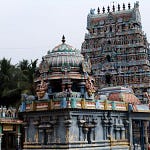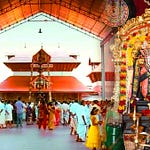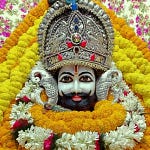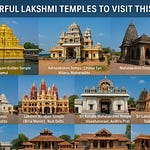The Ramayan Circuit is more than a tourism initiative — it is a sacred trail, a living heritage, and a journey of rediscovering India’s spiritual soul. Rooted in the ancient epic Ramayana composed by Sage Valmiki, this circuit spans across India and into Nepal and Sri Lanka, connecting over 15 historically and religiously significant locations associated with the life of Lord Rama, Sita, Lakshman, Hanuman, and their divine journey of exile, valor, and return.
This book journeys through each destination not just as a believer, but also as a historian — combining archaeological records, oral traditions, rituals, and scriptures — to offer an immersive spiritual and cultural experience.
The Ramayan Circuit is far more than a tourism initiative — it is a sacred trail of devotion, heritage, and civilizational memory. Rooted in the epic narrative of the Ramayana, composed by Sage Valmiki thousands of years ago, this circuit reawakens the journey of Lord Ram, Sita, Lakshman, Hanuman, and their allies across the sacred geography of India, Nepal, and Sri Lanka.
Stretching across 15+ spiritually and historically significant destinations, the circuit connects forests, rivers, temples, ghats, caves, ashrams, battlefields, and divine abodes — each echoing timeless lessons of Dharma, love, sacrifice, and righteousness. This article explores the circuit not just through the lens of faith, but also of history — integrating archaeology, scriptures, rituals, folk memory, and oral traditions to offer an immersive understanding of India’s sacred geography.
🌄 Ayodhya: The Birthplace of Dharma
At the heart of the Ramayan Circuit lies Ayodhya, the ancient city of Saket and capital of the Suryavanshi dynasty. Revered as the birthplace of Lord Ram, it symbolizes divine birth, ideal kingship, and moral governance. Its association with Sapta Puri (seven sacred cities) makes it a moksha-sthala — a path to spiritual liberation.
Sites like Ram Janmabhoomi, Hanuman Garhi, Kanak Bhawan, Nageshwarnath Temple, and Ram ki Paidi along the Sarayu River are imbued with daily rituals and historical continuity. Pilgrims bathe in the sacred waters, seek blessings at Sita Rasoi, and pay homage at Tulsi Smarak Bhawan — where the great saint Tulsidas composed the Ramcharitmanas.
The Queen Huh Memorial Park marks Ayodhya’s transcontinental connection with Korea, tracing the lineage of Korean Princess Suriratna (Queen Huh) to Ayodhya. Jain traditions are also prominent, with five Jain Tirthankaras believed to be born here, testifying to the city's inclusive sanctity.
🛕 Bharat’s Devotion and Ram’s Exile Path
From Ayodhya, the trail leads to Nandigram (Bharatkund), where Bharat ruled on Ram’s behalf by placing Ram’s sandals on the throne — embodying sacrifice, loyalty, and humility. Temples and ponds here are dedicated to this act of devotion, and festivals celebrate Bharat’s unwavering love for his brother.
At Shringverpur, Lord Ram crossed the Ganga with the help of Nishadraj and the humble boatman Kevat — an episode symbolic of inclusion, equality, and divine grace. Archaeological evidence of ancient hydraulic systems here supports the belief in its antiquity.
Further along, Prayagraj — the confluence of Ganga, Yamuna, and the mythical Saraswati — is sanctified by Ram’s stay at Bharadwaj Ashram. Devotees perform Pind Daan, Snan, and participate in the Kumbh Mela, one of the world’s largest spiritual gatherings.
🏞️ Chitrakoot to Nashik: Nature as Divine Witness
Chitrakoot served as Ram’s home for the longest part of his exile. The sacred Kamadgiri Hill, Gupt Godavari caves, Ram Ghat, and Sati Anusuya Ashram capture his austere yet divine life in the forests. Pilgrims today still walk barefoot around Kamadgiri, seeking inner purity and divine connection.
At Panchavati in Nashik, the epic takes a pivotal turn with the abduction of Sita by Ravana. Sites like Kala Ram Temple, Sita Gufa, and Ram Kund bear witness to Sita’s strength and Ram’s dharma. Devotees engage in spiritual bathing and Ramayan recitals here.
While Nagpur is not a direct site of exile, its cultural memory preserves oral Ramayana narratives and regional traditions, sustaining the spiritual ethos across Maharashtra.
🐒 Hampi and the Vanara Kingdom
In Karnataka lies Hampi, believed to be the mythological Kishkindha, where Ram allied with Hanuman and Sugriva. The Hazara Rama Temple features exquisite stone panels narrating the Ramayana. Anjanadri Hill, the birthplace of Hanuman, is a pilgrimage site for devotees who chant the Hanuman Chalisa as they ascend.
Caves, boulders, and rivers of this rocky terrain preserve the mood of ancient forests where alliances were formed and vows of victory made.
🏯 South India’s Ramayan Legacy
At Bhadrachalam in Telangana, the Sri Sita Ramachandra Swamy Temple stands as a southern beacon of Ram devotion, with vibrant Sri Rama Navami festivals and temple rituals.
Further east, Sitamarhi in Bihar is revered as Sita’s birthplace. Nearby Janakpur in Nepal, the capital of King Janak, houses the majestic Janaki Temple where Vivah Panchami (Ram-Sita wedding anniversary) is celebrated with grandeur and ritual drama.
Bihar also hosts lesser-known sites like Buxar, associated with Ram’s education and Tadaka's defeat, and Darbhanga, steeped in Mithila culture and Sita’s lineage.
🕉️ Into the East and the Forest Realms
Mahendragiri in Odisha, mentioned in Ramayana as a Vanara military post before the Lanka expedition, features ancient temples and Vedic landscapes. It’s a place of sacred solitude and mountain worship.
Jagdalpur in Chhattisgarh reflects the tribal echo of the Ramayana, where local communities have preserved unique versions of the epic through oral storytelling, music, and forest rituals.
🌊 Rameswaram and Beyond: Dharma’s Triumph
At the southern tip lies Rameswaram, the final Indian foothold before Lanka. Ram worshipped Shiva here before building the Ram Setu, symbolizing unity between Shaivism and Vaishnavism. The Ramanathaswamy Temple, one of the twelve Jyotirlingas, and Agni Teertham, where Ram absolved his sins, are vital spiritual stops.
Dhanushkodi, now a ghost town, marks the launch point of the Vanara bridge to Lanka — a site of historical intrigue and divine legend.
🇱🇰 Sri Lanka: The Final Frontier of Dharma
Across the ocean, Sri Lanka houses sites that complete the Ramayan journey:
Ashok Vatika where Sita was held captive
Seetha Amman Temple, a modern sanctum near Nuwara Eliya
Divurumpola, said to be the site of her Agni Pariksha
Ravana Ella Falls, surrounded by rich local legends
These places embody Ram’s final battle, the rescue of Sita, and the restoration of cosmic balance through Dharma.
🧳 How to Travel the Ramayan Circuit
A complete Ramayan Yatra can be taken in segments — North Circuit (Ayodhya, Prayagraj, Chitrakoot), Central (Nashik, Nagpur), South (Hampi, Rameswaram, Bhadrachalam), East (Sitamarhi, Mahendragiri), and International (Janakpur, Sri Lanka).
Many states offer spiritual tourism packages and the Indian government’s Swadesh Darshan Scheme supports this cultural heritage initiative. Trains, buses, and flight connectivity make this ancient journey accessible to modern pilgrims.
✨ The Eternal Journey
The Ramayan Circuit is not just a physical route — it is a spiritual awakening. Every town, temple, and river reminds us of higher ideals — truth, sacrifice, loyalty, justice, and divine love.
For the modern seeker, walking this path offers more than religious merit — it rekindles the soul’s connection to India’s spiritual essence and cultural roots.
The Ramayan Circuit is not merely a physical route — it is a journey into the heart of Indian civilization. It connects the spiritual past with the modern seeker. From Ayodhya’s sanctity to Lanka’s justice, each place awakens virtues of courage, love, devotion, and righteousness.
For believers and historians alike, this circuit reaffirms the living tradition of India’s sacred geography — where rivers, hills, temples, and villages echo the eternal footsteps of Lord Ram.
To trace Lord Ram’s journey is to rediscover your own path of righteousness.
🕉️ Jai Shri Ram!












